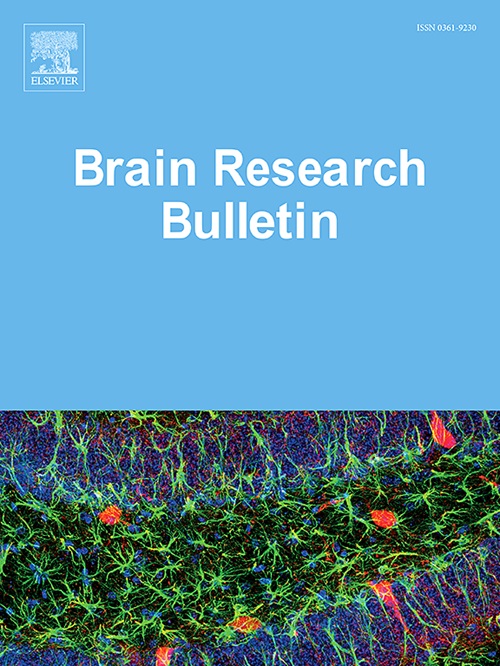Effects of basal division of posterior pallial amygdala on the motor behaviors in pigeons based on transcriptome analysis
IF 3.5
3区 医学
Q2 NEUROSCIENCES
引用次数: 0
Abstract
The basal division of posterior pallial amygdala (PoAb) was one important part of the amygdala in birds. PoAb mainly mediated turning behavior. However, the regulating neuromechanisms of PoAb in motor behavior was not clear yet. In this study, we selected septalis lateralis (SL) as the stimulated nucleus because it was closely associated with PoAb and had clear neuroregulatory functions, and we also used unrelated nuclei (entopallium) and unstimulated blank treatment (CK) as controls. We aim to study the neuroregulatory mechanisms of PoAb by investigating the differences of transcriptome level in different groups. A total of 622 differentially expressed genes (DEGs) were obtained from PoAb after comparing the SL stimulating group with the CK control group. GO functional annotation and KEGG pathway enrichment analysis showed that the upregulated 608 DEGs mainly involved energy supply and fluid balance. A total of 345 DEGs were obtained from the PoAb when comparing SL stimulation group and entopallium stimulation group. The upregulated 187 DEGs were mainly involved in cell communication and signal transductions. The study indicated that PoAb may modulate motor behaviour mainly by increasing ATP production and facilitating synaptic transmission, in which genes such as SMAD3, TMED3, GRIA2, HTR1B and SNCG play an important role. We revealed the mechanisms of brain regulation behaviour from gene level, and provided the theoretical foundation for understanding the avian brain.
求助全文
约1分钟内获得全文
求助全文
来源期刊

Brain Research Bulletin
医学-神经科学
CiteScore
6.90
自引率
2.60%
发文量
253
审稿时长
67 days
期刊介绍:
The Brain Research Bulletin (BRB) aims to publish novel work that advances our knowledge of molecular and cellular mechanisms that underlie neural network properties associated with behavior, cognition and other brain functions during neurodevelopment and in the adult. Although clinical research is out of the Journal''s scope, the BRB also aims to publish translation research that provides insight into biological mechanisms and processes associated with neurodegeneration mechanisms, neurological diseases and neuropsychiatric disorders. The Journal is especially interested in research using novel methodologies, such as optogenetics, multielectrode array recordings and life imaging in wild-type and genetically-modified animal models, with the goal to advance our understanding of how neurons, glia and networks function in vivo.
 求助内容:
求助内容: 应助结果提醒方式:
应助结果提醒方式:


